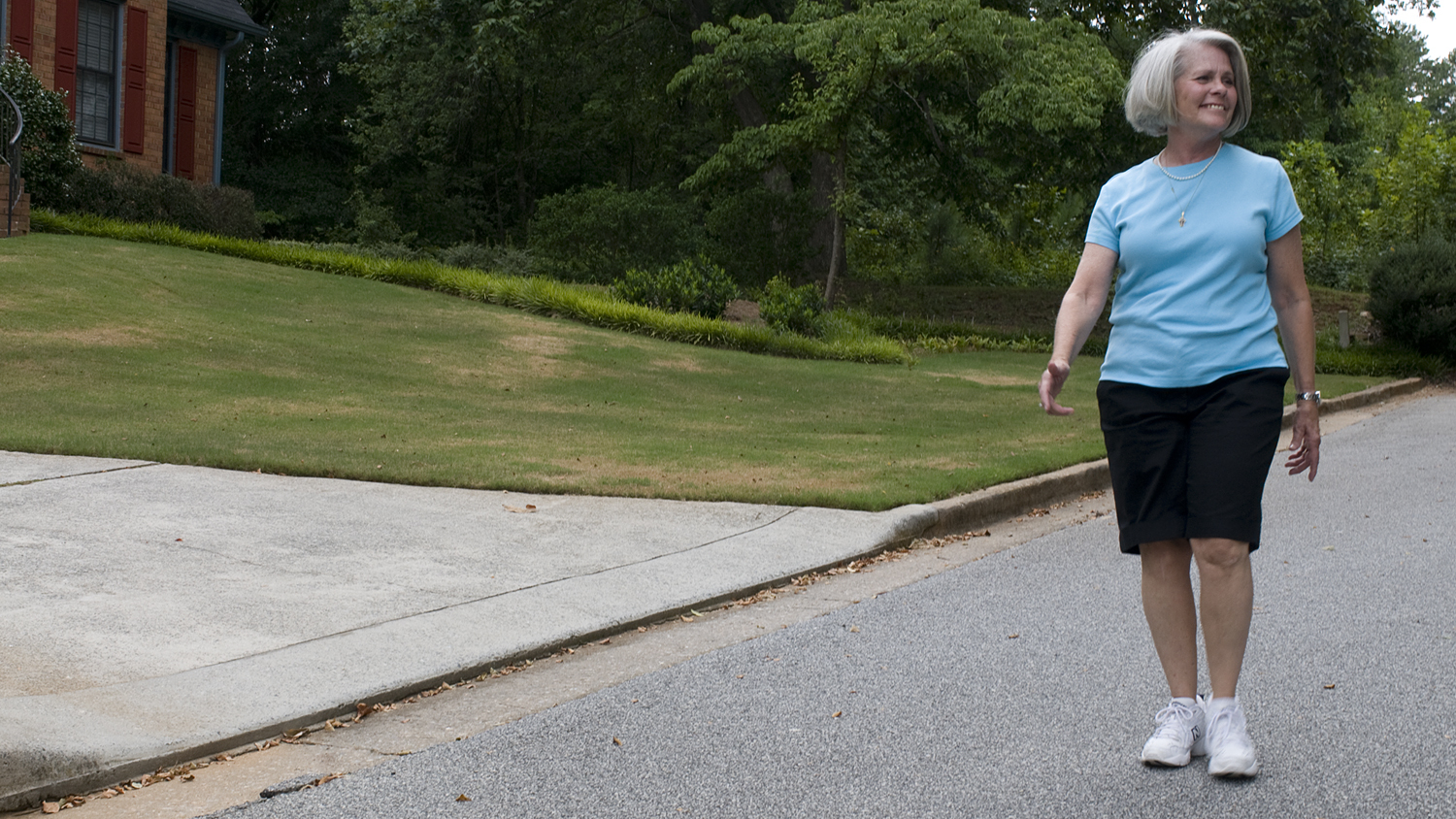Study: Walkable Neighborhoods Linked with More Active Older Adults

Older adults who lived in neighborhoods where it was easy to walk to daily destinations were more physically active than those in less walkable neighborhoods, a study in Barcelona, Spain, showed. The results have implications for efforts to allow older adults to remain healthy and independent while they “age in place” in urban neighborhoods.
“Physical activity is an important aspect of aging because it helps older adults maintain their functional capacity,” says Oriol Marquet, a postdoctoral researcher at North Carolina State University and lead author of a paper on the topic. “Being physically active helps older adults postpone their physical decline and the onset of chronic diseases, and provides them with feelings of independence and empowerment that are highly valued for social and emotional health.”
For the study, NC State researchers used physical activity data from the Catalan region’s cross-sectional travel studies to determine how many older adults met the daily recommendation of 30 minutes of physical activity. Data was collected 10 years apart, for residents 65 to 75 years old in 2004 and for those 75 to 85 years old in 2014, though the study did not track activity for a specific group of participants over time.
Researchers analyzed the activity levels based on physical features of neighborhoods in the Barcelona Metropolitan Region, one of the European areas where the proportion of the population older than 65 is expected to triple over the next 50 years.
Experts calculated walkability scores for each neighborhood based on three factors: a neighborhood’s population density; its mix of residential, public and commercial property; and the amount of land with desirable walking destinations such as retail stores, public facilities, service providers and historical areas.
Areas with high population density tended to have high-rise apartments rather than row houses or detached housing. A neighborhood with a good mix of homes, stores and workplaces made it more likely that residents would walk to do their errands or visit friends. Neighborhoods that lacked sidewalks or services within walking distance scored lower on walkability.
“Walking for transport is an important source of physical activity because it does not require special effort or investment, like going to a gym,” Marquet said.
Residents 65 to 75 years old in walkable neighborhoods made more trips on foot than those in less walkable neighborhoods, and they were more likely to get in the recommended half-hour of daily physical activity. Those in the 75- to 85-year-old group were slightly less active, but those in more walkable neighborhoods took more trips on foot and spent significantly less time driving.
“This research matters because the U.S. and the world are aging, and where we are growing old matters for our health,” said co-author Aaron Hipp, associate professor of community health and sustainability with NC State’s College of Natural Resources. “In many of the Barcelona neighborhoods in the study, it’s common for residents to stay in one place for long periods of time, maintaining their social ties. We need to find effective ways to build neighborhoods in Barcelona and in North Carolina that support healthy activity and allow older adults to age in place.”
Myron Floyd, head of NC State’s Department of Parks, Recreation and Tourism Management, said the Barcelona study provides valuable information because of its focus on walking.
“Walking is one of the most accessible forms of physical activity – all you need is a good pair of shoes,” Floyd said. “We know the importance of activity in preventing health issues such as Type II diabetes, high blood pressure and obesity.”
Floyd is a member of the advisory panel for a recently released national report card from the National Physical Activity Plan, which encourages Americans to become more active. The group’s 2017 United States Report Card on Walking and Walkable Communities gave the U.S. only one passing grade – a “C” in adult walking behavior. The report card gave the U.S. a “D” for walkable neighborhoods and for pedestrian policies. In five other categories, the grade was an “F”: children and youth walking behavior, pedestrian infrastructure, safety, institutional policies and public transportation. There was an “incomplete” grade for walking programs, based on a lack of data.
“We have a long way to go to increase walking and make neighborhoods more walkable in the U.S.,” Floyd said. “But we know improvements will help with health outcomes, and they could be good for business as well by increasing local foot traffic in walkable areas. We hope the report can help in planning and decision-making at each level, with local planners, private industry, state departments of transportation and federal policymakers.”
The Barcelona study, “Neighborhood walkability and active ageing: a difference in differences assessment of active transportation over ten years,” is published in the Journal of Transport and Health. Marquet and Hipp of NC State, and Carme Miralles-Guasch with Universitat Autonoma de Barcelona, Spain, contributed to the study.
- Categories:


